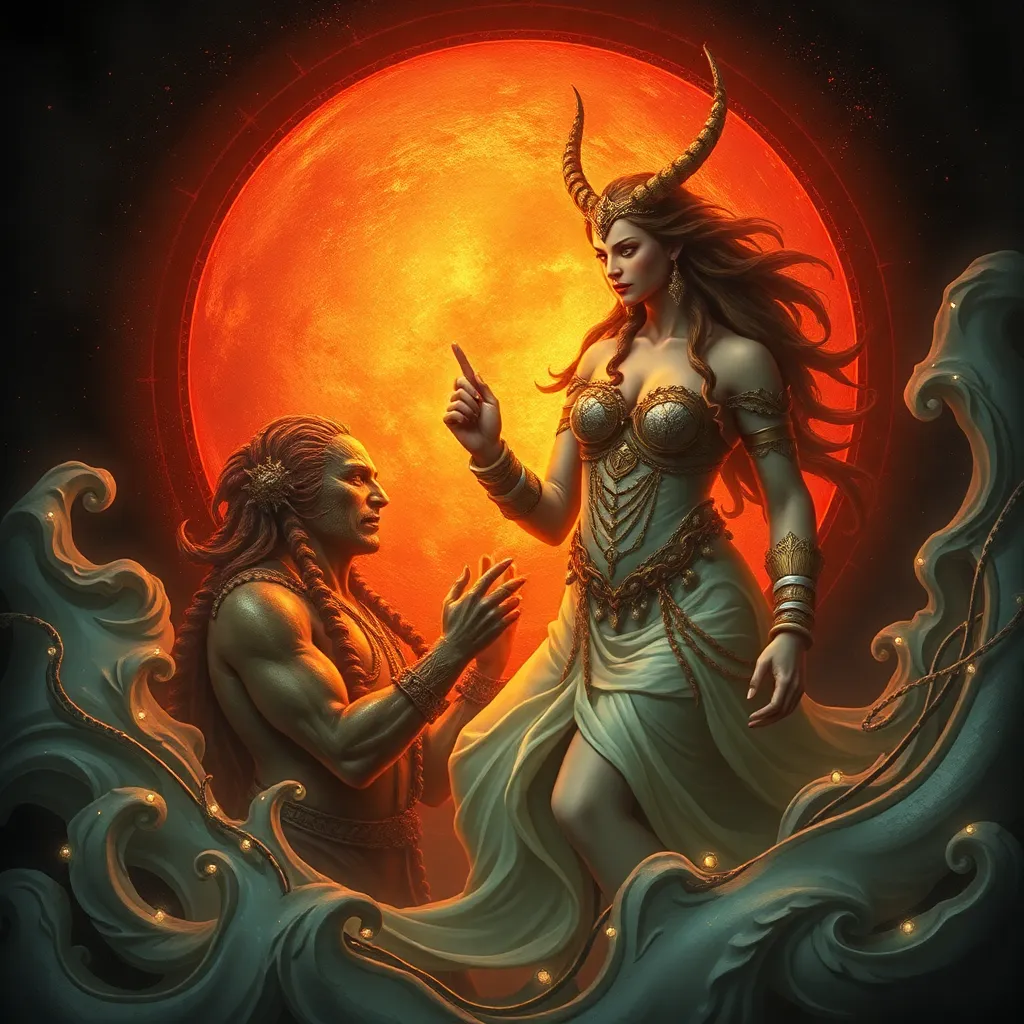Kitsune and the Forbidden: Exploring the Fox Spirit’s Association with Taboo and Mysticism
I. Introduction
Kitsune, the enchanting fox spirit of Japanese mythology, has captivated imaginations for centuries. With their cunning nature and mystical abilities, Kitsune embody a rich tapestry of beliefs that intertwine with the themes of taboo and mysticism. This article delves into the significance of Kitsune within Japanese cultural narratives, highlighting how these fox spirits represent both revered guardians and mischievous tricksters.
The exploration of taboos and mysticism in cultural narratives offers insight into societal norms and values. In the context of Kitsune, we find a complex character that challenges and redefines these boundaries. This article aims to provide a comprehensive overview of the Kitsune mythology, its origins, dual nature, and its evolving role in contemporary culture.
II. The Origins of Kitsune in Japanese Culture
A. Historical roots of the fox spirit
The origins of the Kitsune can be traced back to ancient Japan, where foxes were seen as messengers of Inari, the deity of rice and agriculture. These animals were revered for their intelligence and adaptability, qualities that would later become integral to the Kitsune mythos.
B. Evolution of the Kitsune mythos over time
As time progressed, the perception of foxes began to shift. Initially celebrated for their protective qualities, Kitsune gradually took on more complex characteristics, embodying both benevolence and mischief. Literature and folklore from the Heian period (794-1185) reflect this transformation, where Kitsune were depicted as both protectors and tricksters.
C. The transition from a revered figure to a symbol of taboo
By the Edo period (1603-1868), the Kitsune had become a multifaceted symbol, representing the duality of good and evil. This evolution correlates with the emergence of societal taboos, particularly those surrounding love, desire, and the complexities of human relationships.
III. The Dual Nature of Kitsune: Guardian and Trickster
A. Kitsune as protectors of rice and agriculture
Kitsune are often regarded as guardians of rice fields, protecting crops and ensuring bountiful harvests. This protective aspect of the Kitsune is celebrated in various festivals and rituals dedicated to Inari, where offerings are made to appease these spirits.
B. The deceptive qualities and mischievous behavior
Conversely, Kitsune are notorious for their trickster qualities. They possess the ability to deceive humans, often leading them into mischief or confusion. This duality creates a fascinating dynamic in Kitsune folklore, illustrating the fine line between protector and deceiver.
C. Exploring the balance between good and evil in Kitsune folklore
The balance between good and evil in Kitsune narratives invites deeper reflection on human nature. While some stories portray Kitsune as benevolent protectors, others highlight their more malevolent traits. This complexity allows for a rich exploration of moral ambiguity.
IV. Kitsune and the Concept of Taboo
A. Overview of taboos in Japanese culture
Taboos in Japanese culture often revolve around themes of love, sexuality, and societal expectations. The rigid structures of traditional society create boundaries that can be both protective and restrictive, leading to a fascination with the forbidden.
B. Kitsune’s association with forbidden love and desire
Kitsune are frequently associated with stories of forbidden love, particularly in their interactions with humans. These tales often explore the tensions between societal norms and individual desires, illustrating how Kitsune challenge these boundaries.
- Examples include:
- Stories of Kitsune transforming into beautiful women who fall in love with human men.
- Tragic narratives where love leads to consequences, questioning societal expectations.
C. The role of Kitsune in challenging societal norms
Kitsune serve as a metaphor for the complexities of human relationships, particularly in navigating societal taboos. Their ability to shift between forms underscores the fluidity of identity and the consequences of breaking societal conventions.
V. Mystical Powers and Transformations
A. The supernatural abilities of Kitsune
Kitsune are endowed with remarkable supernatural powers, including shape-shifting, illusion creation, and even the ability to control elements such as fire or wind. These abilities contribute to their mystique and underscore their connection to the spiritual realm.
B. Transformation into human form and its implications
The ability of Kitsune to transform into human form is a central theme in many narratives. This transformation often serves as a metaphor for the exploration of identity, desire, and the complexities of love. However, it also raises questions about trust and deception.
C. The symbolism of metamorphosis in relation to taboo
The act of transformation symbolizes the breaking of societal constraints. It reflects the potential for change and the exploration of hidden desires, challenging the rigid boundaries established by societal norms.
VI. Kitsune in Contemporary Culture
A. Representation in modern literature, film, and art
In contemporary culture, Kitsune continue to thrive as symbols of mysticism and taboo. They appear in various forms of media, including literature, anime, and film, often reflecting the complexities of modern relationships and societal challenges.
B. The resurgence of interest in Kitsune mythology
Recently, there has been a resurgence of interest in Kitsune mythology, with new interpretations that explore their dual nature and the themes of forbidden love. This revival highlights the relevance of these ancient narratives in addressing contemporary issues.
C. How contemporary interpretations reflect or challenge traditional views
Modern portrayals of Kitsune often challenge traditional views, presenting them as symbols of empowerment and individuality. This shift reflects broader societal changes, allowing for a deeper understanding of love, identity, and the complexities of human experience.
VII. Cross-Cultural Comparisons: Kitsune and Other Fox Spirits
A. Similarities with fox spirits in other cultures (e.g., Chinese Huli Jing)
Kitsune share similarities with fox spirits in various cultures, such as the Chinese Huli Jing. Both embody themes of transformation, cunning, and the interplay between the human and supernatural realms.
B. Differences in the portrayal and associations of these spirits
While there are similarities, the cultural contexts lead to different portrayals. For instance, Huli Jing are often viewed in a more ambivalent light, whereas Kitsune can embody both protective and mischievous traits.
C. The universal themes of mysticism and taboos across cultures
The exploration of mysticism and taboos in the context of fox spirits highlights universal themes that transcend cultural boundaries. These narratives reflect human experiences, desires, and the challenges of navigating societal expectations.
VIII. Conclusion
Kitsune, as a central figure in Japanese mythology, embodies a rich interplay of taboo and mysticism. From their historical roots to their dual nature as guardians and tricksters, Kitsune offer profound insights into the human experience. The ongoing exploration of their mythology in contemporary culture reveals the enduring relevance of these themes.
As we continue to delve into the world of Kitsune, we are reminded of the complexities of love, identity, and societal norms. The legacy of Kitsune serves as an invitation for further exploration and appreciation of the intricate narratives that shape our understanding of taboo and mysticism in cultural contexts.



